Children & HIV
Public health’s ultimate achievement of eliminating HIV/AIDS in the foreseeable future would all depend upon how we have been working through a unified global commitment to eliminate its transmission and improve the quality of lives of children and adolescents living with HIV (CLHIV). In the early days of the AIDS epidemic, many countries recognized the devastating impact of the disease on children, adolescents, and families. And they had even initiated programmes focusing on policy issues, programme designs, and best practices concerning children and families living with HIV/AIDS.
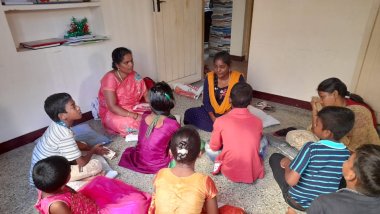
India’s AIDS response through the four-phased NACP has been primarily based on traditional avenues of targeted interventions (TI), free HIV treatment through ART rollouts, and Prevention of parent-to-child transmission (PPTCT). And of course, it helped to make significant progress in reducing HIV infection.
Despite this significant progress, the India HIV estimate for 2021 shows around 69808 children (<15 years) and 170403 young people (15-24 years) are living with HIV in India. It also states that the mother-to-child transmission rate is 24.25 %. The data generated by the National AIDS Control Organisation (NACO) classify late adolescents in the 15–49 age group, while those aged 10–14 years are often masqueraded as the paediatric population. As a consequence, the true HIV burden in the Indian adolescent community has not been estimated. However, few reports suggest that India has the highest number of adolescent HIV infections in South Asia. In the fight against HIV/AIDS, focus and strategic interventions on behalf of adolescents are timely and necessary, but even the research on this issue has been meagre in the country.
India has an estimated one hundred thousand or more street children in each of the urban cities like New Delhi, Kolkata, and Mumbai. They are frequently exposed to neglect, emotional abuse, sexual abuse, and exploitation and are highly vulnerable to HIV and other sexually transmissible infections. And they face additional vulnerability because of their lack of access to nutritious food, sanitation, and medical care, which has largely been ignored in the fight against HIV/AIDS. Current systems of HIV prevention and care services have evolved into more targeted and individualized interventions. And a population, like children and adolescents, not normally reached through these kinds of traditional and targeted interventions has often fallen through the yawing cracks of the system in place.
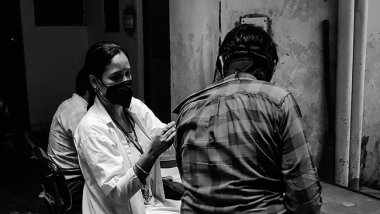
With improved access to antiretroviral treatment (ART), many children born with HIV are now able to live longer and are now sexually active adolescents and youth. Adolescents are generally known to experience and have gone through an increased risk of behavioural, psychological, and sexual changes. HIV infection augments the risk of psychosocial problems among adolescents more than general ones.
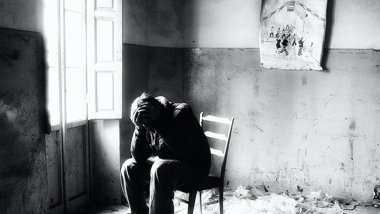
Emotional and behaviour problem
Children with chronic illnesses, in general, are found to be at greater risk for psychiatric problems, including depression, anxiety, and feelings of isolation. Children with HIV have to face the additional complexity of their illness and treatment, along with the adverse psychosocial circumstances and poverty in which they live. Prevalence rates for psychiatric disorders in vertically infected children vary from 55% to 61%. The most common disorders found are anxiety disorders, followed by attention-deficit hyperactivity disorders, conduct disorders, oppositional defiant disorders, and mood disorders. They usually experience higher stress than their uninfected counterparts because of their health condition, loss of parent(s), missing recreational activities, having to take daily medication, and many times facing side effects, stigma, and discrimination.
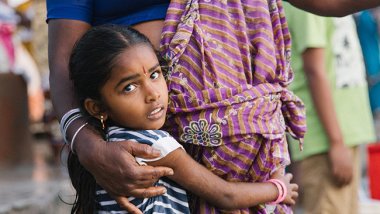
Stigma secrecy and disclosure
A major factor that distinguishes HIV/AIDS from other chronic or terminal illnesses is stigma and discrimination. Too often, many HIV-infected children and their families live in a "conspiracy of silence" and feel the shame associated with the infection. Infection is often kept a secret. One of the disturbing consequences of "conspiracy silence" is that families may become withdrawn, socially isolated, and emotionally cut off from traditional support systems. The parents never wanted to disclose their children’s and their own HIV status because of the stigma they face and its possible social consequences. Disclosures force parents to confront the question of their personal responsibility and to publicly acknowledge the negatively sanctioned behaviours related to sexual activity or substance abuse. Unable to tolerate their own guilt, remorse, and psychological pain, parents are prone to withdraw, deny, and keep the status secret among their children and loved ones. Maternal concerns include fear, anger, blame, and stigmatization from family and friends, as well as from their children, which would further complicate the issue. Self-imposed secrecy and reactions to social stigma may preclude families from procuring necessary treatment—that requires a plan of permanence—for infected and affected children and obtaining other forms of social support.
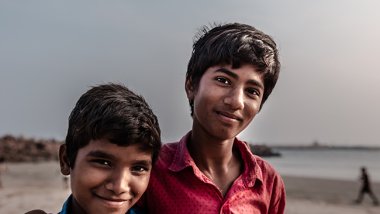
Adolescence issue
For HIV-infected children who live to adolescence, the normal developmental challenges of this stage, including puberty, sexuality, and the desire to be "fit" or "normal", are seriously complicated by HIV infection. The detrimental effects of HIV on growth and pubertal development pose significant challenges for infected young people living into their `teenage years. Dealing with delayed sexual maturation, poor body image due to delayed development of secondary sexual characters, fear of disclosing HIV status to others, and anxiety about HIV transmission pose huge challenges to young people with HIV who are growing into adulthood. The existing HIV-specific services are targeted more toward HIV-positive adults than HIV-positive adolescents. The sexual and reproductive health needs of adolescents are not properly understood or addressed in the HIV programs in India.

Perceived Challenges in Relation to Romantic Relationships
All adolescents living with HIV have the desire to have a romantic relationship. Some of the challenges of having intimate relationships are the fear of rejection and abandonment by the partners if they learn about their HIV status. And they also fear transmission of HIV to the partner if the relationship is with a non-infected person. HIV-related internal stigma was predominately perceived as a hindrance to having a romantic relationship with the opposite sex.
"We too have the same feelings as others. We have the right to love or be loved. But the doubt is that if I disclosed my HIV status, no one would want to have a loving and affectionate relationship with me. I may get rejected, which is more painful and fearful than living with HIV".

Confusion regarding whether to marry a person with HIV-positive or HIV-negative status
Regarding marriage, nearly all adolescents would love to have a life partner in the future. However, all of them had confusion regarding whether to marry a person with HIV-positive or HIV-negative status. Choosing a partner who is HIV positive was perceived as a way of dealing with and coping with HIV-related stigma in the community. Many adolescents feel that they would prefer to marry a person with HIV, as both can be supportive of each other’s illness and difficulties.
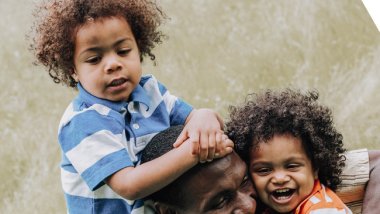
Aspiration to have children
Adolescents have a desire to have children in the future. Girls are worried about the risk of HIV transmission during pregnancy and lack awareness about the prevention of parent-to-child transmission. Many adolescents hope that if they adhere to medication, they will live long enough to complete their education, get a job, marry, and have their own children. But they lack information on preconception care and other factors to be considered in their married lives.
Sexual and Reproductive Health needs and concerns
The adolescents are not comfortable talking about sexual matters with their parents. Girls have concerns related to delayed secondary sexual characteristics, delayed menstruation, and physical appearance. Most of them have retarded growth. Many adolescent girls find it difficult to discuss with their mothers the problems regarding their delayed puberty or physical appearance. When it comes to the source of information about sexuality, adolescents, in general, discuss it with their friends and peers. Generally, adolescents never discuss sexual or reproductive health issues with service providers/parents/guardians. Sometimes the majority of adolescents never discuss these issues with anyone and live with a lot of misconceptions and inappropriate information. The adolescents are not receiving any adolescent-friendly sexual education or counseling in the ART centers. The existing HIV-related counseling and educational curriculums in India are specific to adult HIV and do not address the needs of Adolescents living with HIV (ALHIV). There is also a lack of youth-friendly SRH services and gaps in delivering the services.

Psychological Issues
Studies have shown that there is a range of mental health problems prevalent among ALHIV, such as anxiety, depression, hyperactivity, conduct disorders, and emotional distress. Anger, anxiety about body image, and self-acceptance issues predispose ALHIV to emotional distress (ED), which is found to be associated with negative life experiences. The presence of HIV made them depressed, and the anger is directed toward family, friends, and school. Having a chronic illness due to circumstances that are beyond adolescents' control leads them either to become irresponsible and rebellious towards carers whom they blame or believe to be responsible for their illness or to withdraw into depression and isolation. Physiologically, lipodystrophy syndrome, stunted growth, and delayed bodily development among ALHIV were shown to lead to ED and social isolation. Most often, ED remains undetected because it gets masked by physical complaints, which are explained as "understandable" distress from the disease.
Children orphaned by AIDS
Children who have lost at least one parent to the illness are referred to as "orphans due to HIV/AIDS" or "children orphaned by HIV/AIDS." Besides being orphaned due to the untimely demise of one or both parents due to HIV/AIDS, these children are psychologically and socially burdened, along with having increased morbidities. Children left orphaned by AIDS are typically cared for in the early stages of the illness by their surviving parents, grandparents, or close relatives. With the progression of the disease, many of the children are left to fend for themselves, while others are placed in institutional care.
Children orphaned by AIDS are more susceptible to stigmatization and discrimination by their friends, relatives, and society. These children may take to the streets after being abandoned by their own families. These children are susceptible to various forms of abuse—physical, psychological, mental, and sexual. They are also vulnerable to malnutrition and infections owing to a lack of access to food, education, and health care.
In many instances, the decision to place the HIV-infected child under institutional care is taken without considering not only the general wellbeing of the child but also the circumstances or conditions in the family. Many of the children are placed in institutions by their carers, who consider them to be a burden, ignoring the fact that these children are deprived of their parental bond at a very early age and are emotionally and psychologically fragile. The problems faced by these children continue to exist within the four walls of institutional care. Even though their basic physical and health needs are taken care of to some extent, it is the lack of emotional support that drives these children toward vulnerability.
According to government regulations in India, a child cannot stay at a children’s home or a similar facility after he/she turns 18. Hence, once HIV/AIDS orphans reach the age of 18, they are considered legal adults and are no longer under the care of the orphanage or care home. It's common for them to move out of the orphanage and find their own accommodation and livelihood. However, some orphanages may provide assistance in this transition, such as helping with job placement. A few may choose to continue their education, while others may seek employment or vocational training. These circumstances also push them again into emotional and mental problems, including depression, anxiety, and feelings of isolation.
The following are required to address the issues and concerns of CLHIV/ALHIV:
- Increase coverage of Antenatal Care ANC and Prevention of parent-to-child Transmission (PPTCT) services to reduce vertical transmission of HIV
- Children/adolescent/youth-friendly counseling in the ART centers
- Adolescents should be fully informed of their health status so that they can make informed decisions regarding their actions and life choices.
- An appropriate, clear-cut framework to handle the psychological impact of post-HIV disclosure among HIV-infected children
- Supplementary nutrition support for children living with HIV
- Early mental health interventions for ALHIV before the development of emotional Distress (ED)
- Focused counseling on anger assessment, body image issues, and self-perception is critical for leading a 'normal' life by ALHIV
- It is crucial to understand the sexual and reproductive health (SRH) needs of adolescents living with HIV and provision proper information on SRH.
- Employment opportunities for all adolescents orphaned by HIV/AIDS who should leave care homes at 18 years of age ( as per government rules)
Strengthen peer support among children living with HIV through Adolescent clubs or children's groups
